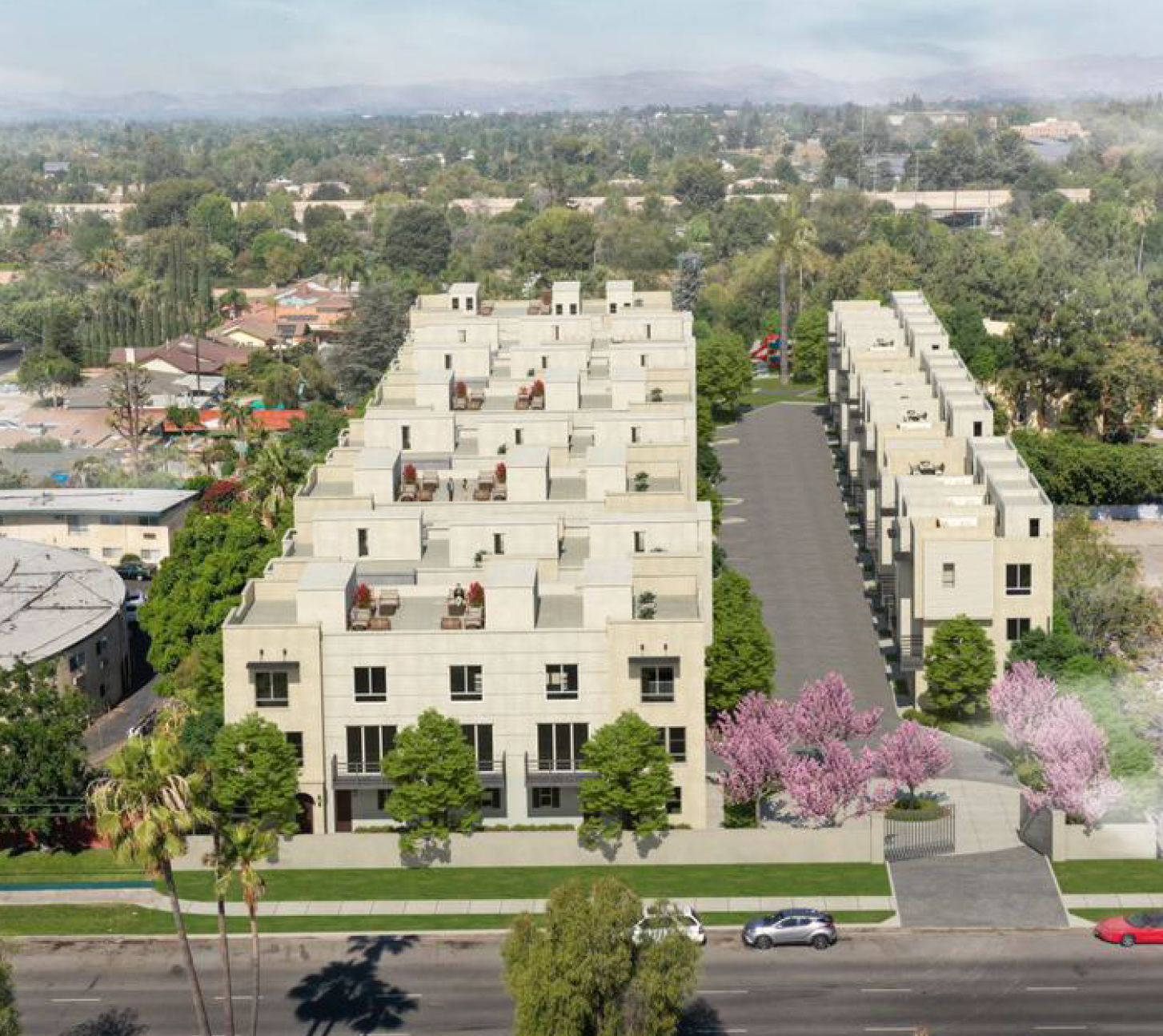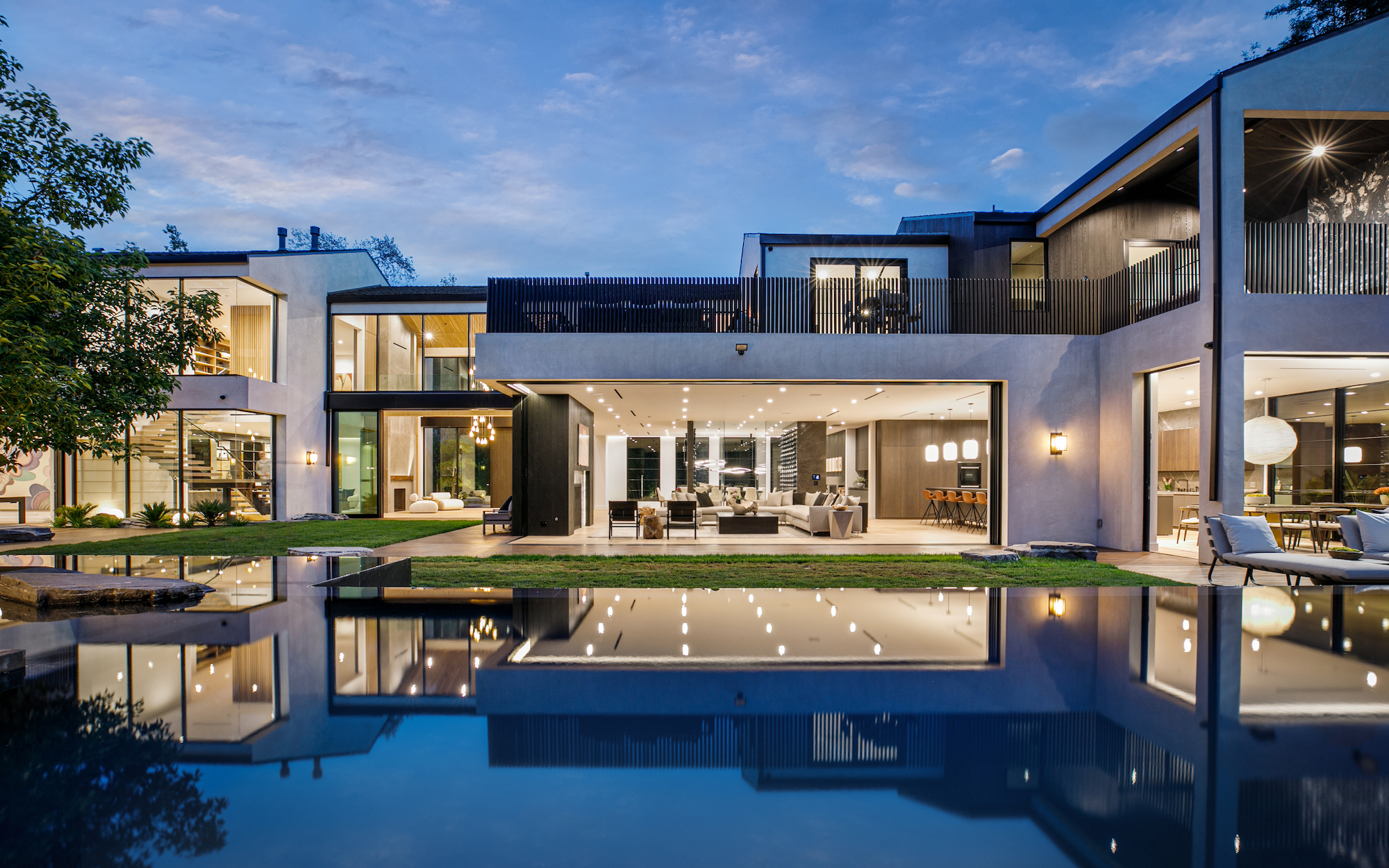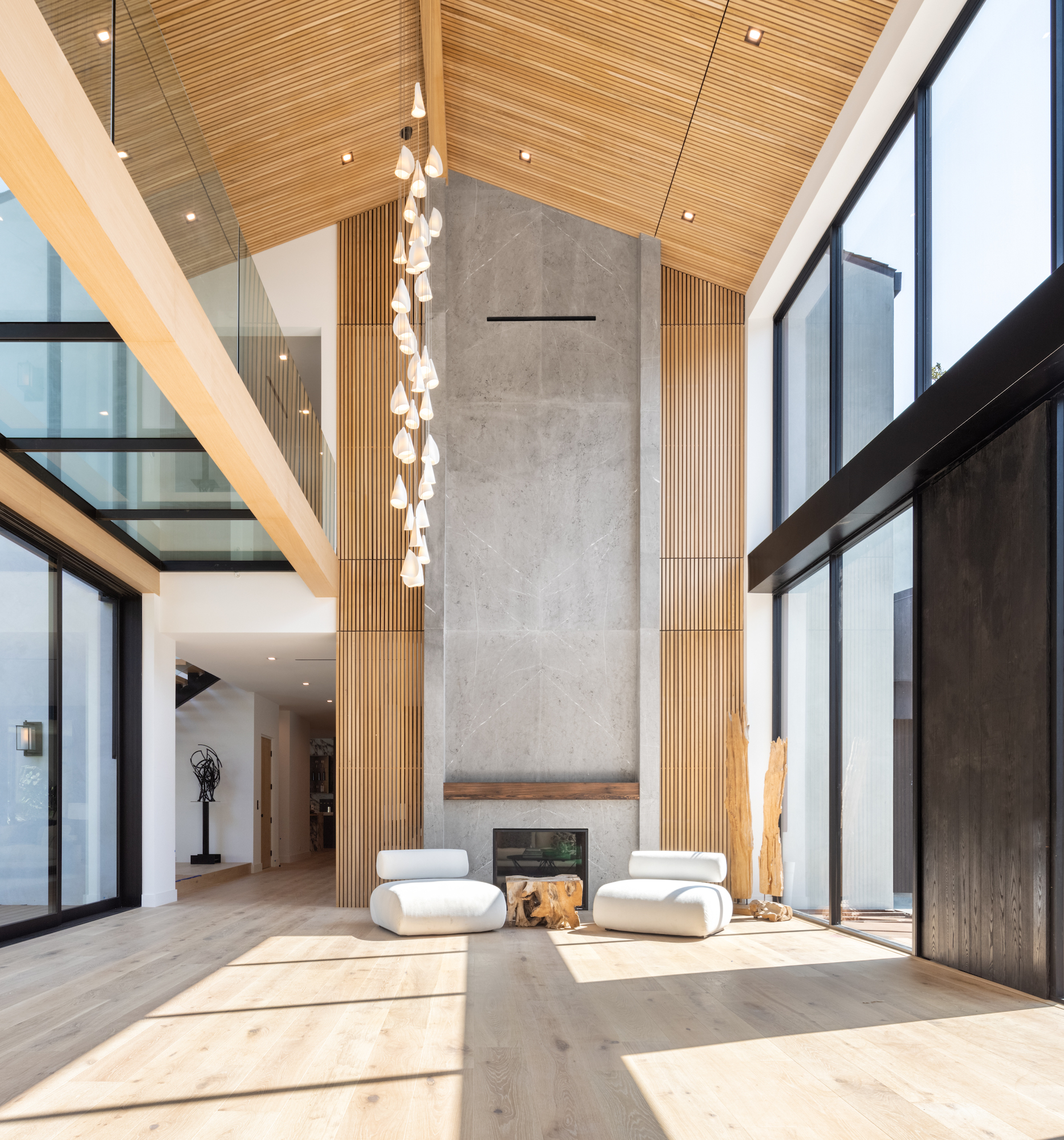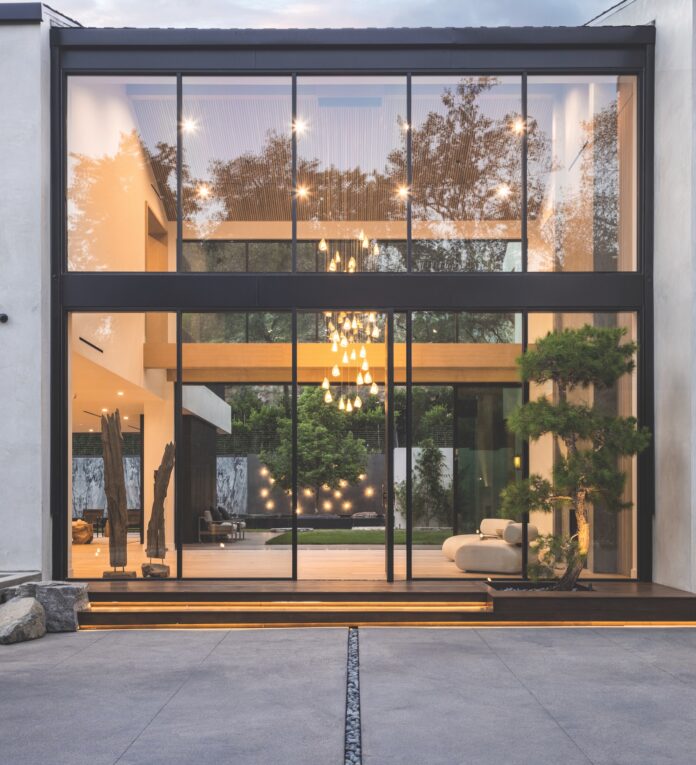With its traditionally lower price points and spacious properties, the San Fernando Valley remains a favorite among homebuyers in the L.A. area, but after a buying frenzy during the pandemic there’s not a lot of inventory.
While it may seem like the perfect opportunity to build, many developers, including Santa Clarita-based Williams Homes Inc., aren’t rushing to do so due to a local measure that they said can make the approval process longer and more difficult.
The company has been building in the Valley for more than 20 years. Its Valley portfolio is made up of about six developments, including ongoing work, for a total of more than 400 new homes.
It’s currently completing the infrastructure for its Valley Villas project in North Hills, which will add 58 three-story townhomes to the area.
Prices for homes in the gated community, which is located at Plummer Street and Sepulveda Boulevard, will range from $600,000 to $700,000 and offer shared outdoor space.
“We’re very excited to bring these new attainability-priced homes to the market,” said Daniel Faina, Williams Homes’ chief marketing officer and Southern California division president.

While Faina is optimistic the homes will sell quickly, it’s possibly the last development the company will construct in the Valley due to the new regulations contained in Measure JJJ.
“It used to be you had to almost give up your firstborn to get something approved, now it’s putting a nail in the coffin,” said Faina.
Passed by voters in November 2016, Measure JJJ requires developers constructing 10 or more residential units seeking general plan amendments or certain zoning changes to include affordable housing or pay fees into the city’s Affordable Housing Trust Fund. Projects must use licensed contractors, pay prevailing wages and hire workers from local and disadvantaged areas and state- or federally- approved apprenticeship programs, among other things.
“It took us almost six years to get the Valley Villas project approved and we were grandfathered in, so the legislation did not apply,” said Faina. “We could not get this project approved today. So while the Valley still has ample infill land and is a great place to build, we are forced to look outside the L.A. area after this project,” Faina added.
Williams Homes is not the only development company to be deterred by the new regulations, said Stuart Waldman, president of the Valley Industry & Commerce Association.
In fact, Waldman said the new regulatory landscape, together with rising interest rates, material costs, and the new ULA transfer tax, are deterring many developers from building in the Valley and the greater L.A. area, which is contributing to the housing crisis.
“We have a painfully low vacancy rate,” said Waldman. “We need more multifamily housing in L.A. County, but if developers can’t make a profit they’ll look elsewhere, which is what many are doing.”
A standstill

While there are a number of luxury condominium and apartment building complexes available or being built in communities north of the Boulevard, including the Warner Center, Waldman said construction in many lower-income communities has come to a standstill.
“You will always see construction in places like Studio City and Sherman Oaks, where developers can make a profit, but in lower-income neighborhoods like Pacoima and Arleta no one is building because the costs are too high and they won’t be able to make a profit,” he said.
“A lot of developers are looking at Ventura, Santa Clarita and Orange counties, where there are less onerous regulations and thus fewer additional costs,” he added.
Measure ULA, which took effect on April 1, requires sellers to pay a 4% transfer tax on properties priced or valued between $5 million and $9,999,999.99 and a 5.5% tax on assets of $10 million or more. It is having an impact on what’s getting built and where, said Waldman.
“Prior to the measure taking effect, there was a huge rush to get properties off the books,” said Waldman. “Some people even took a loss. Now ULA will cut into developers’ profit margins, and I suspect some projects won’t get built because of it unless they are subsidized, as is the case with affordable housing.”
Marty Azoulay, president of Equity Union Real Estate’s My House Sellers, has seen an increase in the number of single-family homes being constructed, especially in communities such as Tarzana and Mulholland Park, but he said most are being built “with the intention of selling under the $5 million mark.”
“As you go to the outskirts of the San Fernando Valley now they’re building just a little bigger and making sure to add a lot more bang for the buck, so that if they’re going to get taxed, it’s already factored into the price,” said Azoulay.
More people are also building additional dwelling units onto their existing properties, converting detached garages and putting up separate structures to use as rental units to offset some of the expense, said Azoulay.
“The city is pretty lenient when it comes to allowing ADUs, and it’s a way for families to buy more home than they otherwise could afford,” said Azoulay.
One other obstacle facing homebuyers: higher interest rates on mortgages, which deter potential sellers from placing existing homes on the market and cause would-be buyers to be more cautious.
“During the pandemic, many people refinanced their homes because interest rates were low,” said Faina. “Now if they sell they will have to buy a cheaper home if they want to have a comparable payment. Most people sell to buy a larger and nicer place, so it contributes to the low supply of inventory.”
Faina said developers like Williams Homes are “bullish” about building more housing to meet the demand since it’s a great opportunity to gain a larger market share as there are currently very few options for home buyers. Despite the positives, the new regulatory front in L.A. remains a deterrent for many developers.
Luxe development

And there are areas in the Valley that are attracting luxury developers. In Encino, celebrity designer Jae Omar, founder of Jae Omar Design, and his partners at JVE Development have been building high-end luxury homes for elite buyers looking for uniquely themed properties.
“Encino has always been a niche area, and recently it has been gaining traction among celebrities,” said Omar. “We’ve been progressively yielding higher and higher price points.”
The company creates one-off homes, not large communities.
While the homes sell for prices in the $20 million-plus range, Omar said the same property outside the Valley would yield $40 million to $50 million, making it an attractive option for those who can afford to move into what he described as a secure, trendy enclave.
Omar and JVE have sold a number of luxury homes in the Encino area, including Onin, a property located off Woodvale Road, which went for $18 million. The sale, which took place earlier this year, was one of the highest ever in Encino. Several other luxury homes are in various phases of construction.
“We are completing one home right now that will have 18,000 square feet, three levels, a bowling alley, and numerous other amenities,” said Omar.
“We believe in this neighborhood and we’re very confident in our product,” he added.
With litigation seeking to overturn the ULA tax pending in Los Angeles Superior Court and the uncertainty surrounding the current economic climate, the future of development in the San Fernando Valley remains up in the air, though some are more optimistic than others.
“Development has tapered from the height of Covid when conditions were most favorable,” said Omar. “But there’s still a lot of projects getting done.”
“I don’t see anything changing as long as our elected officials continue to make it so difficult for people to build,” said Waldman.
“Without meaningful legislation to prioritize a lot of market-rate housing to be built in Los Angeles, prices will remain very high and supply will remain very low,” Williams Homes’ Faina added.
